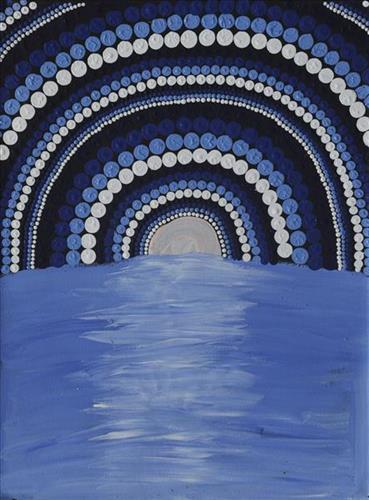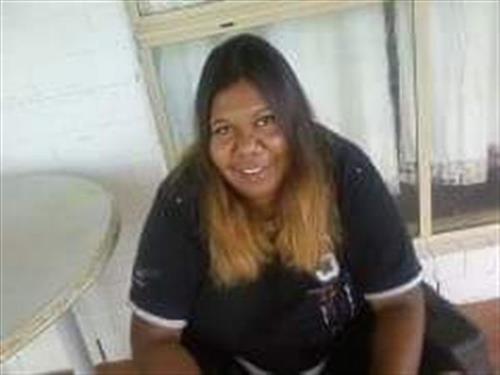111582334792
Jindu (Sun) and Wirlarra (Moon)
“When I started painting I named the two; Jindu, the Sun and Wirlarra, the moon. The reason I do these paintings its means to me four skin groups Martu have and every time when we have funerals and law business, there’s always two skin groups [who] works and the other two stay, and then they rotate. Everyone born with a skin group always know what to do. Every time we lose a family member we know who’s going to do what. You are born into a skin group. That’s my culture and law.
You know what my little theory is, how we learnt our skin groups? Way back in time, you been looking at the moon and sun, when its coming up and going down, sunrise and sunset. We all been looking at them and know that they keep rotating and doing their job. That’s just my theory.”
- Tanya Charles
In the heart of central Western Australia, the Martu people are the traditional owners of a vast landscape stretching from the Great Sandy Desert in the north to Wiluna in the south. Across this country, their lives are bound by a common ancestral heritage, law, and culture. To one another, they are walytja (family).
Walytja
The Martu term for family, walytja, encapsulates a broader idea of relatedness that permeates every aspect of life. The Martu four-section kinship system determines a person as belonging to either the Purungu, Milangka, Panaka or Karrimarra skin group, and was created by the Jukurrpa (Dreaming) ancestors.
This system not only defines relationships, it also establishes a framework for expectations and obligations, and extends the importance of family far beyond mere blood or marriage ties. Family is not limited to blood connections; it encompasses all relationships within the entire community, forming a network of relationships that was crucial to survival during the pujiman (traditional, desert dwelling) era, and that remains fundamental to Martu life today. The kinship system allows everyone to know what expectations one person can have in relation to another, and means that familial terms and relationships are present between any two individuals, whether or not they are related by blood.
Walytja in relation to Country
Over thousands of years, Martu lived in small, kin-based bands that traversed their own territorial areas by foot according to seasonal changes and cultural obligations. Ngamaru Bidu describes this experience in the story for her work, ‘Wantili’; “My family been walking round there … Everywhere, we been walking everywhere.”
Walytja groups had rights to their ngurra (home Country, camp) as inherited over generations. Also passed down over generations was the intimate knowledge of the physical and cultural properties of one’s Country, and the responsibility to care for and nurture one’s ngurra. The passing of rights and responsibilities through walytja in relation to specific lands continues today.
Walytja in Art
Many of the works by Martumili artists are representations of Country as defined by familial ties- artists paint “where their family is from and where they belong to” (Kuru Gladys Bidu). One’s Country encompasses their birthplace, and the Country they and their family lived on during the pujiman era. Collectively these works make clear the inseparable relationship between walytja and Country.
The significance of walytja is revealed in Martu art not only in its depiction of ngurra as delineated by ancestral inheritance, but also through the act of painting itself. Martumili artists begin to paint with their parents, grandparents and extended family, fostering an organic process of learning about painting techniques, along with knowledge of specific locations and their related Jukurrpa narratives. In this way, the passing down of cultural knowledge through art ensures the continuity of Martu heritage.




